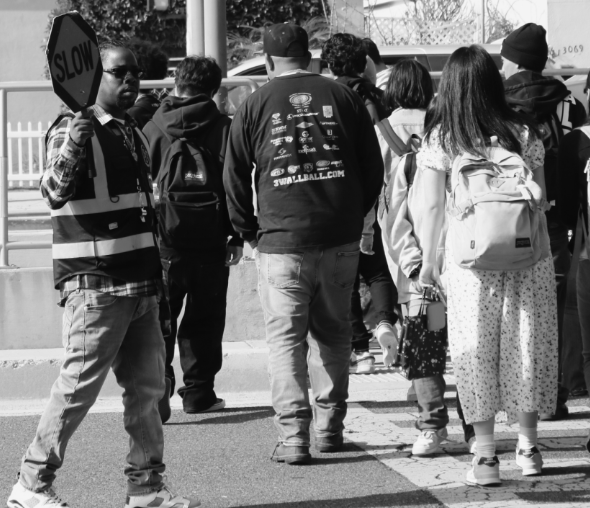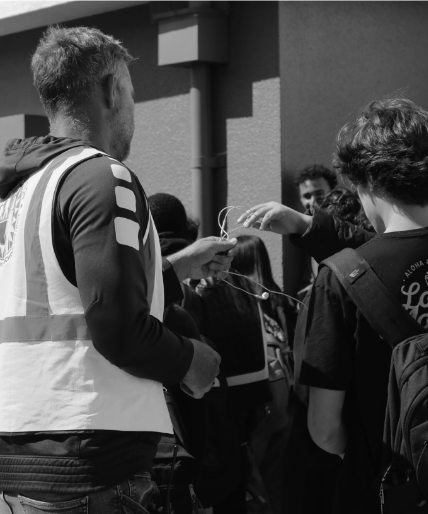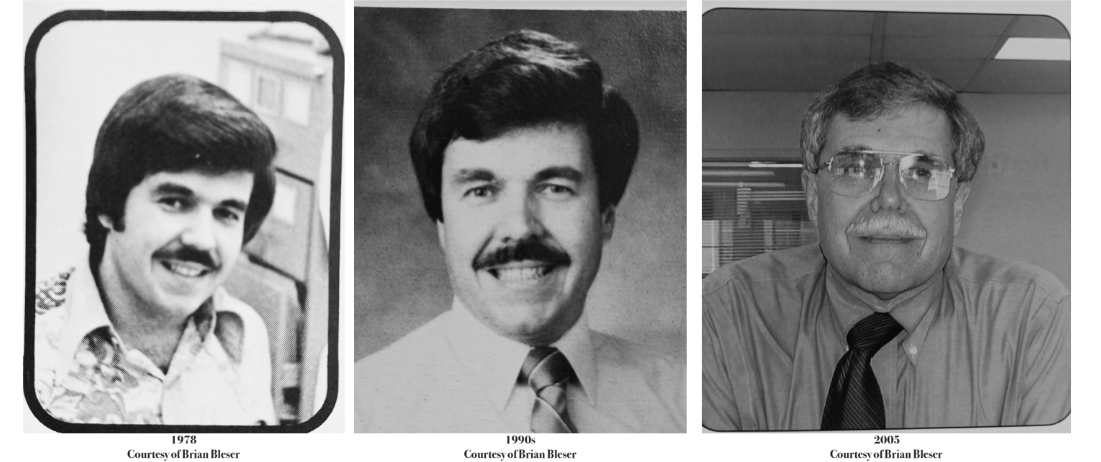Have you ever wondered about the feathered creatures that call Venice High home?
On October 25th, a male cooper’s hawk found himself trapped in the upstairs hallway of the East building, but was rescued by Italian teacher Carolyn Willcox, who is also the sponsor of the Ornithology Club.
This “year-round resident” has been frequently spotted flying around the East and Shop buildings, according to Willcox, and his recent appearance in the East Building has posed questions about what Venice can do to help these creatures.
Background On The Cooper’s Hawk
A Cooper’s hawk has a dark brown exterior with a white and brown striped chest. The similar striped pattern is carried over to the underside of its wings, and its distinct long tail. Both males and females look similar at first glance; however, a male Cooper’s hawk is smaller than a female.
Willcox said that a Cooper’s hawk is equipped with “big talons” in order to capture and eat their prey, specifically rodents.
“Venice has a rodent problem, but hawks will typically eat rodents in the twilight,” she said. “The hawks are our friends, so we have to be careful and treat them nicely.”
What Went Down
Willcox said that during Period 6, she received a text message from Japanese teacher Trasey Nomachi, informing her that the hawk had gotten stuck in the upstairs hallway of the East Building.
“She texted me because she knows I’m an avid birder,” she said.
Willcox said that since Period 6 was her conference period, she “ran” over to the East Building to be able to see the hawk up close, but she wasn’t sure if she could do anything to help.
According to Willcox, the doors at the end of the upstairs hallway of the East Building have glass windows, trapping any bird that flies through.
“Birds can’t duck under and out the door,” she said. “They just want to fly straight out of the window, and the window above is just glass.”
Willcox said that Dean of Students Dave Galley suggested putting up butcher paper to cover the light from the windows on top of the doors. However, the butcher paper was light, and the light was still coming through the window.
“When we waved the hawk to go towards the doors, he started zooming down the hallway, and we were hoping that we would zoom out the door,” Willcox said. “But he hung right, and he hit another window in a stairwell and he knocked himself out.”
Willcox said that, normally, she wouldn’t have been able to grab a hawk due to their “big wings, big talons, and sharp beak,” and the hawk would most likely have flown away anyway.
However, Willcox said that she knew that once the hawk was stunned, he would be “grabbable.”
“I took off my jacket that I was wearing, and I wrapped the hawk up in it before I could be too afraid to do it,” she said.
Willcox said that she carried the hawk out to the front lawn and laid him down. She said that he was “hunched over, looking around, and still disoriented,” and that it took him about three minutes to get his bearings.
“And then he took off!” she said.
Willcox said that it’s hard to capture a bird his size.
“We could have called animal control, etc., but that moment when he was stunned on the ground is the quickest and easiest way to get him out,” she said.
Repeating Hawk History
According to Spanish teacher Cris Vicente, this is not the first time a hawk has been trapped there.
Vicente said that in May 2024, a similar incident occurred in which a hawk was flying through the East building and got stuck. Willcox believes that these two incidents involved the same bird.
He said that retired testing coordinator Laura França was the person who had caught the hawk, and that she had previously gone through a training about hawks in order to “understand them.”
“She knew from her training that when a hawk is down, it is the best time to grab them,” he said. “When the hawk crashed into the window thinking it was an open space, it momentarily fell down to the ground. She reached for a tablecloth and tossed it on top of the bird, wrapped it, and ran down the stairs with the bird in her arms and released it outside.”
Vicente said that these incidents keep happening because it’s a “matter of the design of the building.”
“If you look at the second floor of Venice’s buildings, there are a bank of windows that, even if the lights are off, shine plenty of light so birds think it’s an open passageway,” he said. “These are historically preserved buildings, and we can’t really change their design. There’s not too much that can be done to prevent this from happening.
“The best way to get the birds out of the buildings is to turn off all the lights and to try to cover up the windows if possible, so that the only remaining light is the door and they can find their way out,” he said.
Vicente said that, over the years, Venice has had a lot of instances in which different birds are flying through the buildings and get stuck. Since his classroom used to be upstairs in the East building, he said he saw seagulls, hummingbirds, finches, and more fly through the buildings, only to find that they couldn’t get out.
Yellow-Rumped Warblers
The Cooper’s hawk is not the only bird here at Venice that repeatedly finds itself trapped in these buildings.
Willcox said that the yellow-rumped warbler, a small, gray bird with yellow patches along its feather, starts getting trapped in the East, West, Far West, and main buildings.
“In the winter, there is an explosion of migrating yellow-rumped warblers,” she said. “They’re all over the place. They fly up and down the hallway, and because of the light from the windows, they can’t get out.”
The Ornithology Club has been looking to find solutions for blocking out the light during the winter, and just last week, they received permission to put up black paper across the windows in the East, West, and Main buildings this week.
“I Got Completely Hooked and Obsessed”
Willcox, who sponsors the Ornithology Club here at Venice, spends her free time looking at birds all over Los Angeles. As of now, she’s seen 305 different species in LA County.
“LA is one of the ‘birdiest’ counties in the whole nation,” she said.
Willcox said that she found her passion for birds when she started taking her then 10 year old son to a birder’s walk at Sepulveda Basin every month.
“I got completely hooked and obsessed,” she said. “When my son grew out of it, I just kept going back.”
Willcox said that she was “very excited” to see the bird up close.
“I felt so good about helping him out,” she said. “It was such a great moment.”






